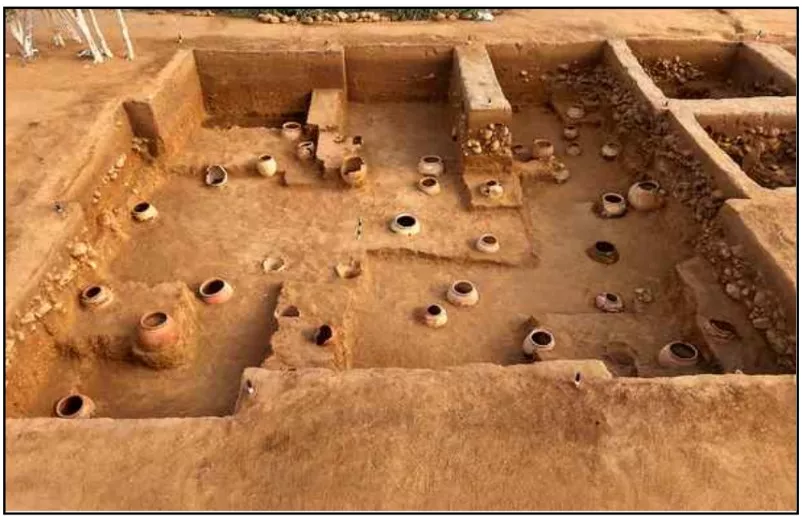Excavations at Thirumalapuram in Tamil Nadu’s Tenkasi district have revealed an Iron Age burial site, potentially dating as early as 3345 BCE.
About the Thirumalapuram Site
- The site at Thirumalapuram, excavated by the Tamil Nadu State Department of Archaeology (TNSDA), offers the first evidence of Iron Age culture near the Western Ghats in Tamil Nadu.
- Location: It covers approximately 35 acres, near the Kulasegarapereri tank, in Tamil Nadu’s Tenkasi district.
 Features of the Burial Site:
Features of the Burial Site: -
- Discovery of a rectangular stone slab chamber with urn burials, made of 35 slabs filled with cobblestones to 1.5 metres depth.
- Ceramics include white-painted black-and-red ware, red ware, red-slipped ware, black-polished ware, and coarse red ware.
- Symbols on urns depict human figures, mountains, deer, and tortoises, showcasing artistic expression.
- Artefacts Recovered: A total of 78 antiquities made of bone, gold, bronze, and iron were unearthed, including tweezers, swords, spearheads, gold rings, axes, daggers, chisels, and arrowheads.
About the Iron Age in India
- The Iron Age in India marks the widespread adoption of iron technology, significantly impacting agriculture, warfare, and the emergence of complex societies.
- Period: While North India’s Iron Age is generally dated to around 1200 BCE, recent southern finds, including Thirumalapuram, suggest early to mid 3rd millennium BCE (c. 3345–2513 BCE).
- Features
-
- Use of iron tools and weapons facilitating agricultural expansion and defense.
- Urbanization and societal complexity, with burial practices and cultural artefacts reflecting organized communities.
- Ceramics and symbolic art indicate cultural continuity with sites like Adichanallur, Sivagalai, and Thulukkarpatti.
Significance of the recent discoveries: Thirumalapuram strengthens the understanding of early Iron Age settlements in South India, highlighting technological, cultural, and artistic advancements in the subcontinent.
![]() 13 Oct 2025
13 Oct 2025

 Features of the Burial Site:
Features of the Burial Site: 
